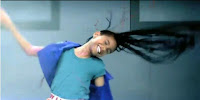In every culture and society, some things you are socially and culturally allowed to do with your hair, and other things you are not. These rules are not always explicit, but in workplaces and schools they are sometimes part of the internal regulations.
Here the link (click) to an article from the Jamaican writer Kei Miller's blog, about a controversy in a Jamaican school (2016), explaining why, in the particular context of Jamaica, it is more that just a haircut we are talking about: Yes, this is about slavery and its long legacy. It is about a full emancipation that has been so desperately long in coming.
Read also Corey Hairstory (click) about natural hair at school and the difference of reception between a Jamaican school and New York one.
In 2018, a court decision in Jamaica clears the way for dreadlocked child to start school (links here).
 |
| (Photo from Kei Miller's blog) |
 | ||
| Aged 17, David Bowie campaigned for long-haired boys rights in his Brixton Schoolboy (photo Getty) |













